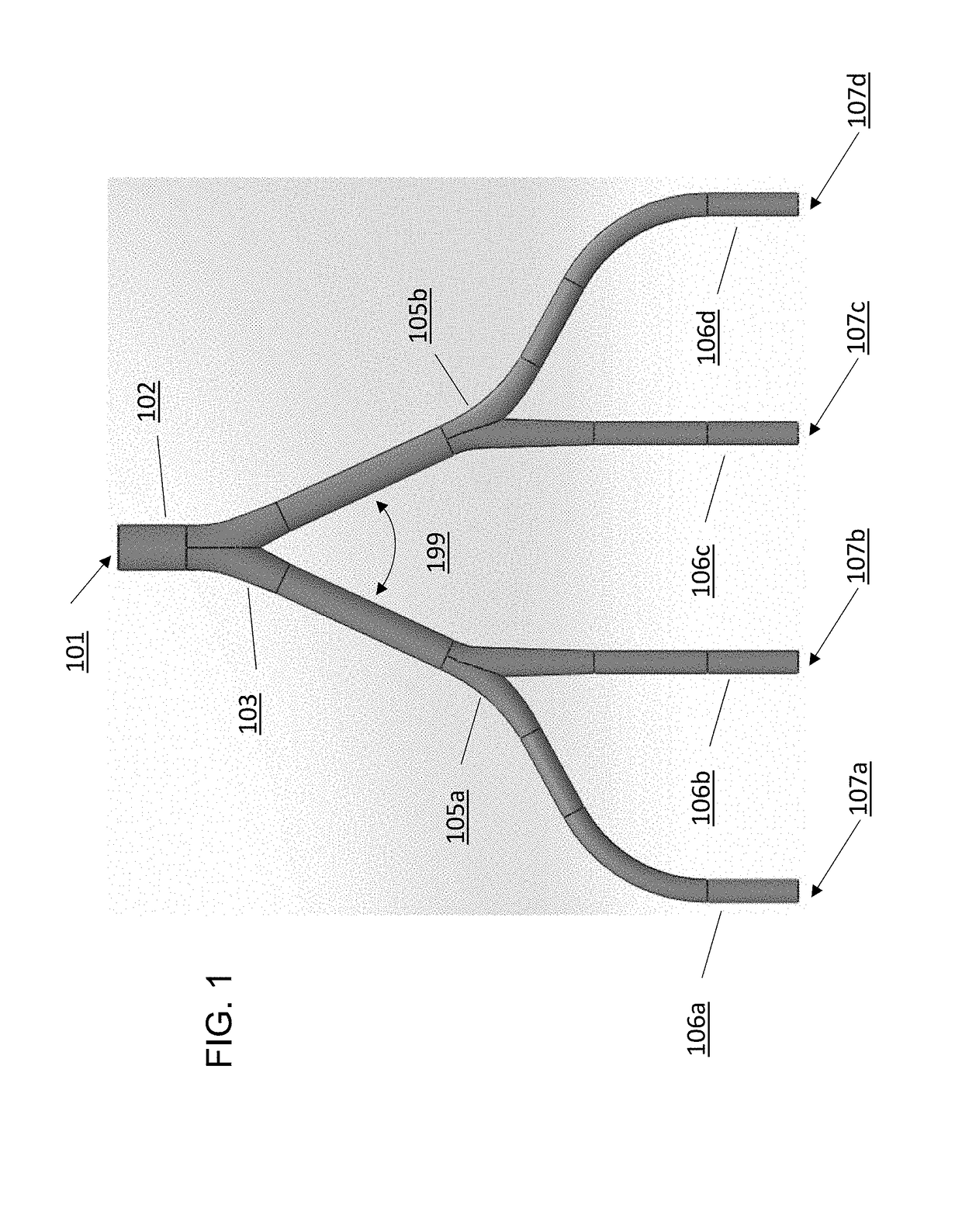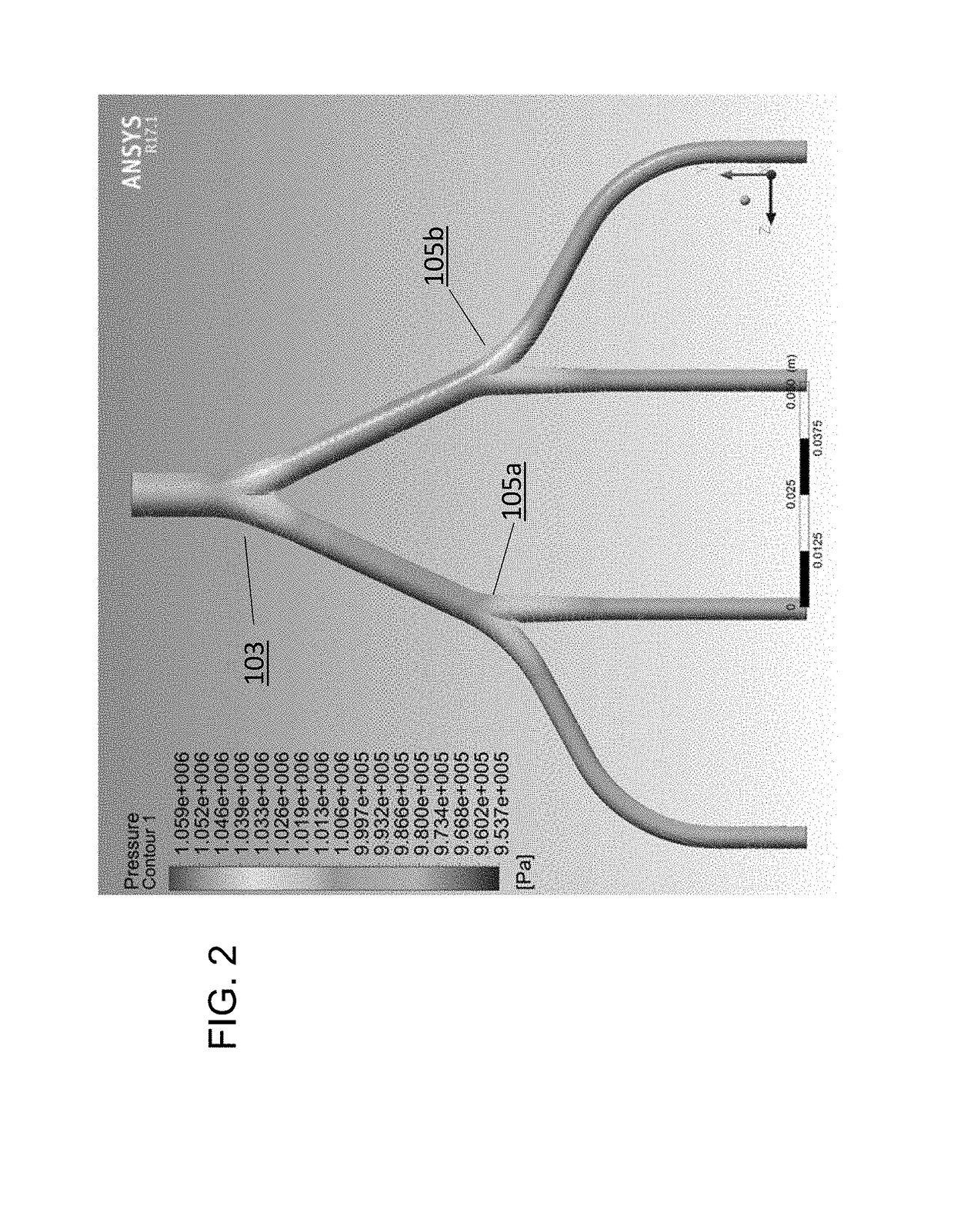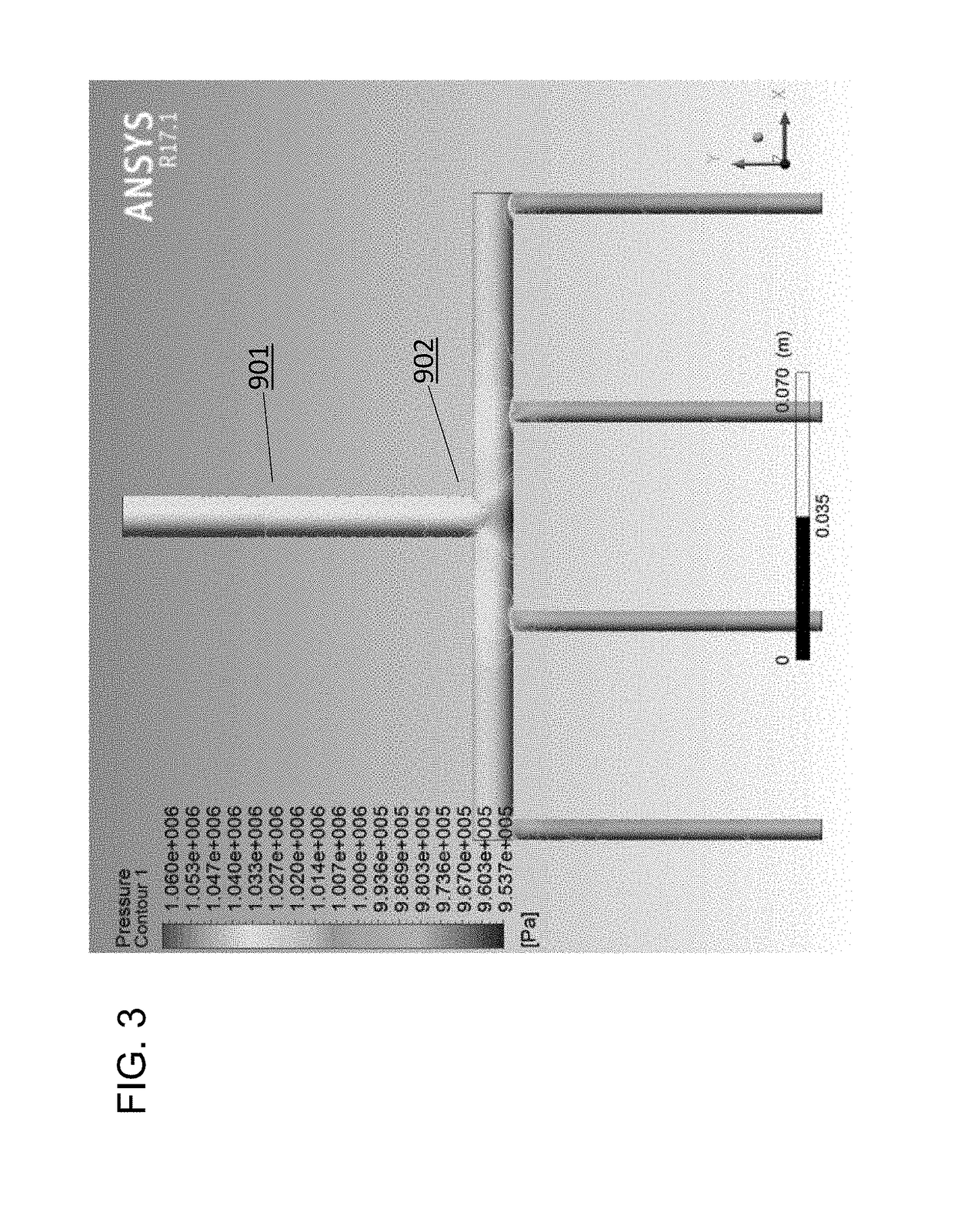Additive manufacturing constructs and processes for their manufacture
a technology of additive manufacturing and manufacturing processes, applied in the field of additive manufacturing, can solve the problems of variation in print to print construction, manufacturing limitations of am, etc., and achieve the effects of reducing thermal variations, increasing the mass of metal, and increasing the defect ra
- Summary
- Abstract
- Description
- Claims
- Application Information
AI Technical Summary
Benefits of technology
Problems solved by technology
Method used
Image
Examples
example 1
sting Apparatus to Measure Deviation from CAD-Designed Model Features in as-Manufactured Features
[0182]It was discovered that structural features vary from the CAD-designed model to the as-manufactured object.
[0183]A 3-D CAD model of a testing apparatus was generated using AutoCAD using the Figures described herein, and converted into the appropriate file format for the additive-manufacturing test printer. The test printer was a direct metal laser sintering (DMLS) powder bed 3-D printer. The build material was titanium powder (CarTech® Purls Ti-6Al-4V Titanium Powder, Carpenter Technology Corp., USA). The additive manufacturing build instrument was the EOS M 290 (EOS, Germany). The laser write speed was varied and limited to a maximum of 7 meters per second. The laser was a Yb-fiber laser operating at 400 W. The laser focus diameter was 100 microns. The step height was varied between 20 to 40 microns. The additive manufacturing process was done under inert nitrogen atmosphere so as ...
example 2
nt of Drooping of Teardrop-Shaped Openings in One Embodiment of the Present Invention
[0188]It was discovered that the teardrop-shaped openings positioned on at least one side surface of one testing apparatus embodiment of the present invention can be used to measure the drooping effect in the as-manufactured testing apparatus openings as a function of radii.
[0189]The testing apparatus was designed, manufactured, and imaged according to the method described in Example 1. A graph of the as-measured xz-teardrop vertical and horizontal opening radii compared to the CAD-designed opening radii is presented in FIG. 36 and FIG. 37. Surprisingly, the as-manufactured testing apparatus failed to produce any openings with a radius of 0.15 mm or smaller. The results indicate that the testing apparatus can be used to measure the deviation from CAD-designed drooping in the as-manufactured testing apparatus.
example 3
or Additively-Manufacturing a Construct
[0190]A 3-D CAD model of the constructs described herein are generated using AutoCAD, and are converted into the appropriate file format for the additive-manufacturing system. Constructs can be of almost any shape or geometry and are produced using digital model data from a three-dimensional model or another electronic data source such as an Additive Manufacturing File (AMF) file or an (STereoLithography) STL file. One example of digital model data is G-code. G-code (also RS-274), which has many variants, is the common name for the most widely used numerical control (NC) programming language.
[0191]Before printing a 3-D CAD model from an STL file, it must first be examined for errors. Most CAD applications produce errors in output STL files: holes, inverted or inconsistent face normals, self-intersections, noise shells or manifold errors. A step in the STL generation known as “repair” fixes such problems in the original model.
[0192]Once error ch...
PUM
| Property | Measurement | Unit |
|---|---|---|
| Temperature | aaaaa | aaaaa |
| Length | aaaaa | aaaaa |
| Mold temperature | aaaaa | aaaaa |
Abstract
Description
Claims
Application Information
 Login to View More
Login to View More - R&D
- Intellectual Property
- Life Sciences
- Materials
- Tech Scout
- Unparalleled Data Quality
- Higher Quality Content
- 60% Fewer Hallucinations
Browse by: Latest US Patents, China's latest patents, Technical Efficacy Thesaurus, Application Domain, Technology Topic, Popular Technical Reports.
© 2025 PatSnap. All rights reserved.Legal|Privacy policy|Modern Slavery Act Transparency Statement|Sitemap|About US| Contact US: help@patsnap.com



